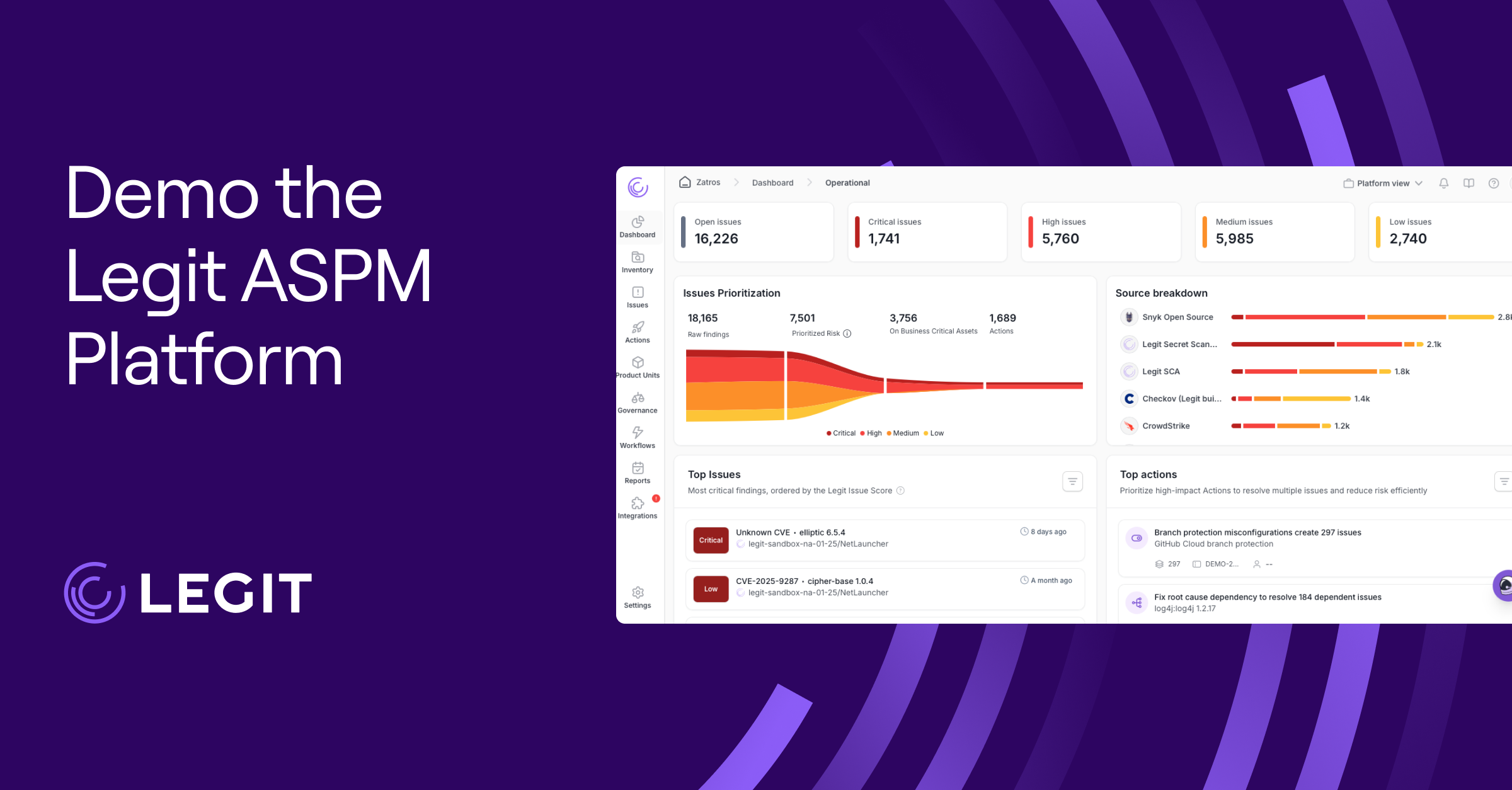When systems fail or threats emerge, you don’t have time to investigate every alert equally. That’s where triage comes in.
Without a clear method for triaging alerts, information overload can quickly overwhelm your team, causing them to overlook or leave critical threats unresolved. Much like in emergency medicine, triage in cybersecurity helps you quickly assess which issues demand immediate attention, which can wait, and which pose minimal risk.
Prioritizing cyber threats with purpose improves response time and strengthens your overall security posture. Here’s how to complete triage effectively.
What Is Triage in Cybersecurity?
Triage in cybersecurity is the process security teams use to rapidly assess and prioritize alerts and incidents based on risk and urgency. Just like in emergency medicine, the goal is to focus on what matters most—like isolating an endpoint showing signs of ransomware or flagging a critical server under attack.
The triage process in cybersecurity begins by collecting context, pulling from logs, threat intelligence feeds, and behavioral analytics. Analysts then ask questions like: Is this a real attack? Which systems did it affect? What’s the potential business impact? Based on those answers, they determine what to escalate or dismiss.
When handled effectively, triage reduces dwell time, streamlines response, and prevents minor issues from turning into full-blown incidents.
What Is a Triage Analysis?
Analysis is the first step in the security triage process. Analysts review alerts to determine what they mean, how serious they are, and who should handle them. The focus is on making intelligent, fast decisions that route each alert to the right place.
This process starts with checking if the alert is legitimate and assessing its potential impact. Is it a critical system at risk or just a false positive? Based on that context, teams decide whether to escalate, investigate, or close the event, streamlining the overall triaging process.
How Does Cybersecurity Triage Work?
Cyber triage helps teams take control of fast-moving threats by turning raw alerts into clear, prioritized actions. But analysts don’t have time to sort through alerts individually when incidents strike. This three-step workflow keeps your team focused on the highest-risk issues first:
1. Identification and Prioritization of Cyberthreats
The process begins the moment an alert lands. Analysts need to verify if the signal is real or just noise. Once analysts validate the alert, they classify it. Was it a phishing email, lateral movement, or an attempted breach? For example, identifying a suspicious package download may trigger a deeper investigation into potential software supply chain attacks.
Analysts prioritize the threat based on possible exposure, the asset involved, and available threat intelligence. Early classification shapes everything that follows and helps the team avoid wasting time on false positives or low-impact events.
2. Assessment and Prioritization According to Severity
Next, analysts dig deeper to scope the alert and determine its urgency. This often involves reviewing logs, network activity, and system behavior to gauge the threat’s reach.
Teams assign a low, medium, or high severity level based on impact and urgency. An alert affecting critical infrastructure or containing indicators of compromise (IOCs) will jump to the front of the queue. This evaluation keeps minor issues from blocking major ones.
3. Resource Allocation for Resolution
Once the priority is clear, it’s time to act. Teams route high-severity threats to incident response for immediate containment while automating, deferring, or assigning lower-risk issues to Tier 1 analysts.
The goal is to get the right people involved to respond efficiently without overloading your team. A solid triage strategy ensures serious incidents don’t sit idle and your response effort stays aligned with real business risk.
5 Cybersecurity Incident Examples
Not every alert demands the same response. Security incident triage helps teams focus on what truly matters. These examples highlight the range of incidents that often trigger investigation and action:
1. Data Breaches
A data breach involves unauthorized access to sensitive information such as customer records, financial data, and intellectual property. These often stem from stolen credentials, unpatched software, or misconfigured cloud storage. After the team detects a breach, they identify which systems and data the attacker targeted and determine whether the attacker still has access.
2. Phishing Attacks
Phishing attempts use deceptive messages to trick users into revealing credentials or clicking malicious links that may deliver malware. Even when blocked by email filters, these attacks still require triage. Analysts review sender patterns, alert impacted users, and check for signs of successful compromise. If attackers have harvested credentials, the security team may need to reset access controls across affected systems.
3. Distributed Denial of Service Attacks
Distributed denial of service (DDoS) attacks overwhelm a service with traffic and take it offline. While they don’t typically involve data loss, they can paralyze systems and distract from other attacks. During triage, teams assess the source and nature of the traffic, prioritize protection for critical services, and activate mitigation tactics to restore availability.
4. Unauthorized Access
Unauthorized access signals that someone has gotten into a system or dataset they shouldn’t have, whether via leaked credentials or privilege escalation. Analysts quickly identify how an attacker gained access, determine which systems or data the attacker interacted with or modified, and assess whether the team has contained the incident or is part of a broader intrusion.
5. Ransomware
Ransomware encrypts files and spreads fast, often locking down entire departments or critical systems. Triage in this scenario means isolating infected machines, identifying the ransomware variant, and checking for indicators of persistence or external command-and-control connections. Sometimes, these incidents stem from software supply chain vulnerabilities that need long-term remediation to avoid reinfection.
Who Uses Triage?
Triage is most commonly performed by security operations center (SOC) teams. These analysts are on the front lines, constantly monitoring alerts and network activity for signs of compromise. They often handle the initial triage, validating alerts, discarding false positives, and escalating serious issues to more experienced responders. Their ability to quickly separate alerts by severity keeps the rest of the team focused on actual threats.
Beyond the SOC, incident response (IR) teams, managed security service providers (MSSPs), and security analysts in smaller organizations who wear multiple hats use triaging. When incidents escalate, IR teams rely on accurate triage to contain and resolve high-priority threats like ransomware, breaches, or unauthorized access.
In some environments, triage insights also feed into broader application security posture management (ASPM) programs and inform the organization’s incident response plan, helping teams continuously monitor risk across the SDLC. Whether the team is large or lean, the goal is to prioritize incidents efficiently and solve the right problems at the right time.
4 Benefits of Triage in Cybersecurity
A strong triage process transforms how your team handles threats daily. These key benefits show why security triage is essential to any effective cybersecurity incident response strategy.
1. More Efficient Use of Resources
By ranking alerts based on risk and urgency, analysts can spend less time digging through a flood of security alerts and more time acting on real threats. Prioritizing threats this way becomes critical when teams face limited resources and a high volume of alerts.
2. Quicker Incident Resolution
Teams move critical issues to the front line when they prioritize alerts by severity. This speeds up response, reduces attacker dwell time, and gives your team a better shot at containment before damage spreads.
3. Improved Threat Detection and Prevention
Over time, triage allows you to better understand your organization's threats. By combining internal data with threat intelligence, teams can identify patterns and link alerts to broader attack campaigns.
Cataloging patterns, flagging repeat behaviors, and documenting context for each alert builds institutional knowledge that strengthens detection and long-term prevention. This is especially useful for identifying risks like software supply chain attack patterns or spotting vulnerabilities tied to software dependency issues, where teams might otherwise overlook subtle signals.
4. Less Investigation Time
A good triage process adds relevant context, like system logs, user behavior, or known IOCs, so responders aren’t starting from scratch. With that information, analysts can work faster and resolve incidents without wasted effort.
Legit Security: Your Ally for Triage Cybersecurity
Legit Security enhances the triage process by giving real-time visibility into risks across the SDLC. Our platform surfaces actionable insights by correlating vulnerabilities, misconfigurations, and security events across CI/CD pipelines, repositories, and runtime environments.
With built-in policy enforcement and automated context gathering, Legit helps your team cut through alert noise and focus on what matters. Whether investigating a vulnerable dependency or tracing an exposed secret, Legit accelerates identification and response so you can resolve incidents faster and more confidently. Book a demo today.
Download our new whitepaper.


